Discover the art of caring for your Brahma chickens with our Ultimate Guide! From understanding their gentle temperament and giant size to mastering the art of winterizing coops, this guide covers Brahma chicken care, feeding, egg production, and breeding. Uncover tips for raising Brahmas in cold climates, exploring their lifespan, varieties, and even the beautiful feather care needed.
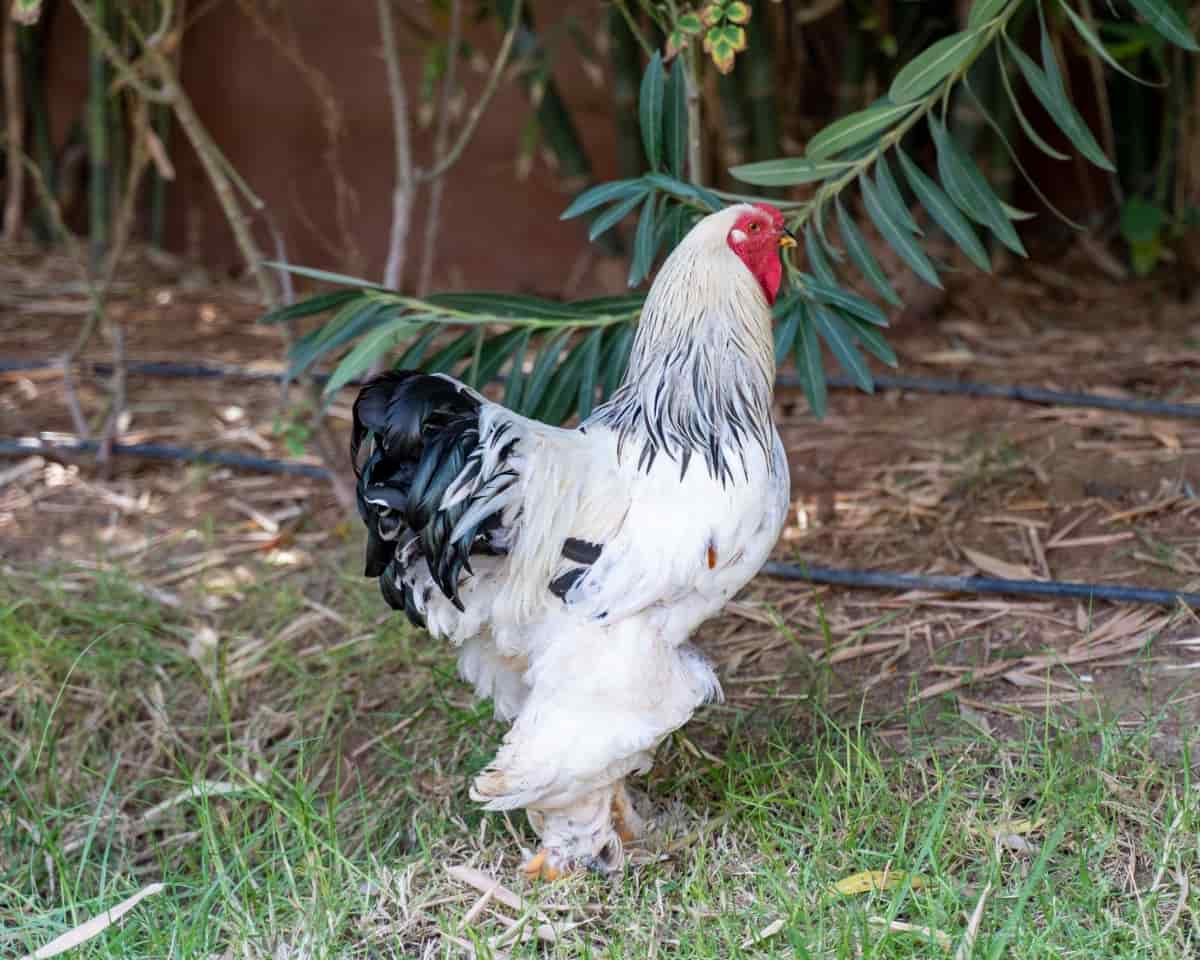
Raising Brahma Chickens
Introduction to Brahma Chickens
Brahma chickens are one of the most popular breeds of backyard poultry. They are known for their large size, gentle temperament, cold hardiness, and beautiful feather patterns. Brahma chickens are also good layers of large brown eggs, and some of them can even go broody and hatch their chicks. If you are looking for a breed that is easy to care for, friendly, and productive, Brahma chickens might be the perfect choice for you.
Overview of the Breed
Brahma chickens, originating in India and China, were introduced to the US and Europe in the mid-1800s. Known for meat production, they gained popularity as show birds and farm animals. Classified as a heavy breed, Brahma chickens have a broad body and feathered legs and come in light, dark, and buff varieties. Other less common varieties include white, black, blue, partridge, and silver. They have a distinctive appearance with a small pea comb, a large head, and a dewlap under their chin.
Reasons to Choose Brahma Chickens for Your Flock
- Brahma chickens are calm and gentle, ideal for families, and easy to handle.
- Tolerant of cold weather, they adapt well to various climates with proper care.
- Produce 150-200 large eggs annually; some may go broody and hatch eggs.
- Fast-growing, reaching maturity at six months, with tender, flavorful meat.
- Striking appearance, unique feather patterns, and impressive size make them stand out in any flock.
Understanding Brahma Chickens
Before you start raising Brahma chickens, you need to understand some of their basic characteristics and needs. This will help you provide them with the best care possible and avoid common problems or mistakes.
Physical Characteristics and Varieties
Brahma chickens are a robust breed, reaching over 10 pounds in weight. They boast a sizable body, short legs with feathered feet, and a pea comb, reducing frostbite risk. These birds feature small wattles, a large head with a short beak and small eyes, and distinctive red oval-shaped earlobes. Available in various color varieties like light, dark, buff, white, black, blue, partridge, and silver, each adhering to specific standards for ideal appearance.
Behavior and Temperament
Brahma chickens are known for their gentle and calm nature, making them suitable for families with children or pets. These intelligent birds are not aggressive and can be easily trained for simple tasks. While not very active, they enjoy exploring and interacting with their flock. Brahma chickens prefer spending time in the coop or running but appreciate some free-ranging to scratch and peck for treats. Their low noise level, curiosity, and adaptability make them an ideal choice for those seeking docile and social poultry.
In case you missed it: Ultimate Guide to Raising Leghorn Chickens: Feeding, Breeding, Egg Production, and Care
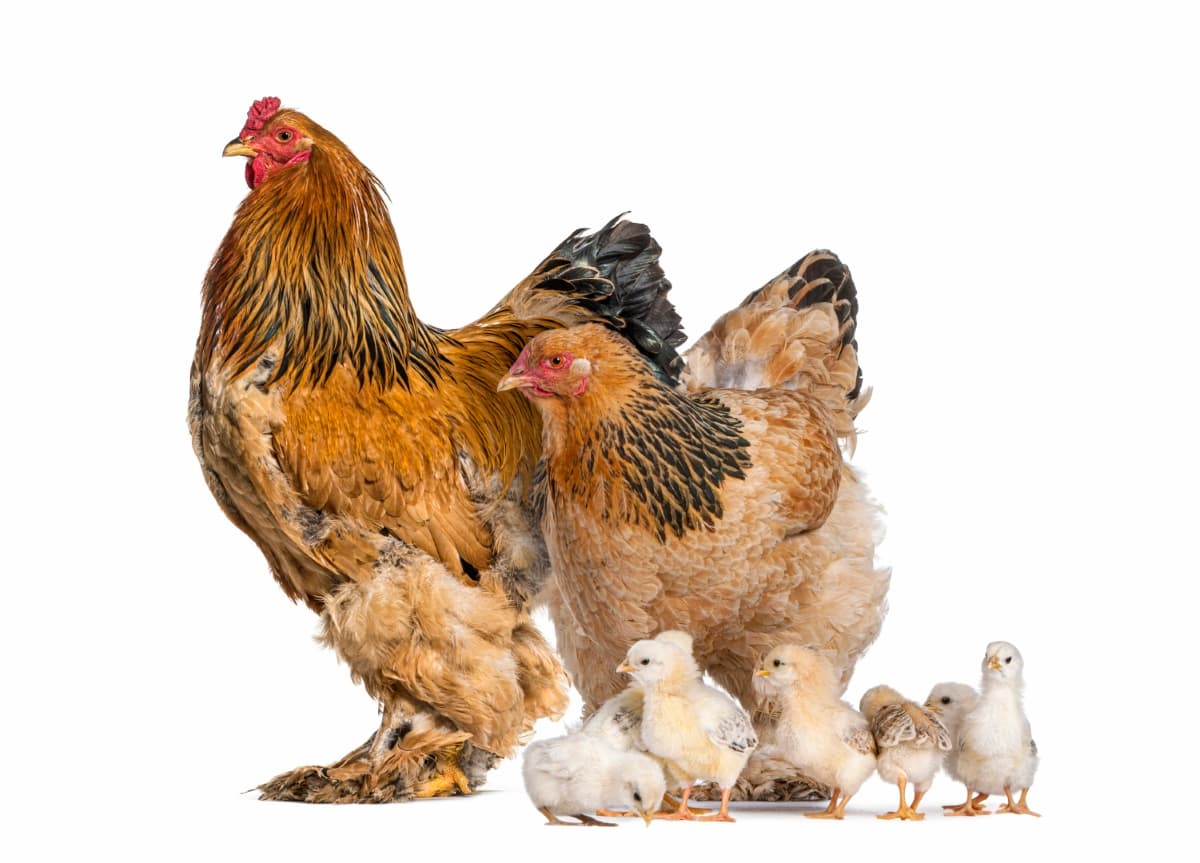
Setting Up the Coop
One of the most important aspects of raising Brahma chickens is providing them with a suitable coop that meets their needs and preferences. The coop is where your chickens will take rest, lay eggs, and seek shelter from predators or bad weather. Therefore, you need to make sure that your coop is comfortable, secure, and spacious enough for your Brahmas.
Coop Design and Size Requirements
Choosing a chicken coop involves considering personal preferences, budget, and available space. Options include ready-made coops or DIY builds like A-frame, tractor, walk-in, or shed-style coops. Size is crucial, with a minimum of 4 sq ft per chicken inside and ten sq ft per chicken outside to prevent overcrowding. Coop selection should accommodate the number of chickens and provide ample space for movement. Ready-made options can be purchased, or one can opt for a DIY project using kits or building from scratch.
Essential Coop Features for Brahmas
To ensure a secure environment for Brahmas, provide 8 inches of space per chicken with roosts elevated at least 18 inches, nesting boxes with soft bedding, spacious feeders and waterers, proper ventilation through windows or doors, and mesh-covered vents to prevent predator entry. Use artificial lighting for extended laying seasons, improved egg quality, and increased chicken activity to deter predators.
Creating a Safe and Comfortable Habitat
To ensure a healthy Brahmas, prioritize shade, maintain clean water, and a balanced diet with commercial chicken feed, fruits, vegetables, grains, insects, and worms. Keep them mentally and physically active with enrichment items.
Bedding Materials and Maintenance
- Straw: Natural and biodegradable, provides insulation, but harbors pests and mold, needs frequent changing, and must be kept dry.
- Wood shavings: Soft, absorbent, odorless, controls ammonia levels, but can be dusty, potentially expensive, and hard to find.
- Hemp bedding: Made from hemp plant stalks, highly absorbent and durable, dust-free, mold-resistant, and compostable, but can be costly and not widely available.
- Sand: Easy to clean and sanitize, suitable for hot climates, aids in cooling, but heavy, messy, abrasive, and can cause ingestion issues if consumed excessively.
Temperature and Ventilation Control
Brahma chicken care involves temperature and ventilation control. They need a well-insulated coop for comfort in winter and extra bedding or straw for warmth. In summer, ensure the coop is not too hot or stuffy, and provide shade and water for cooling. Monitor the temperature inside the coop with a thermometer, ideally between 40°F and 70°F, and avoid using heat lamps or artificial sources to prevent fire hazards.
In case you missed it: How to Raise Buff Orpington Chickens: Guide for Egg Laying, Breeding, and Care
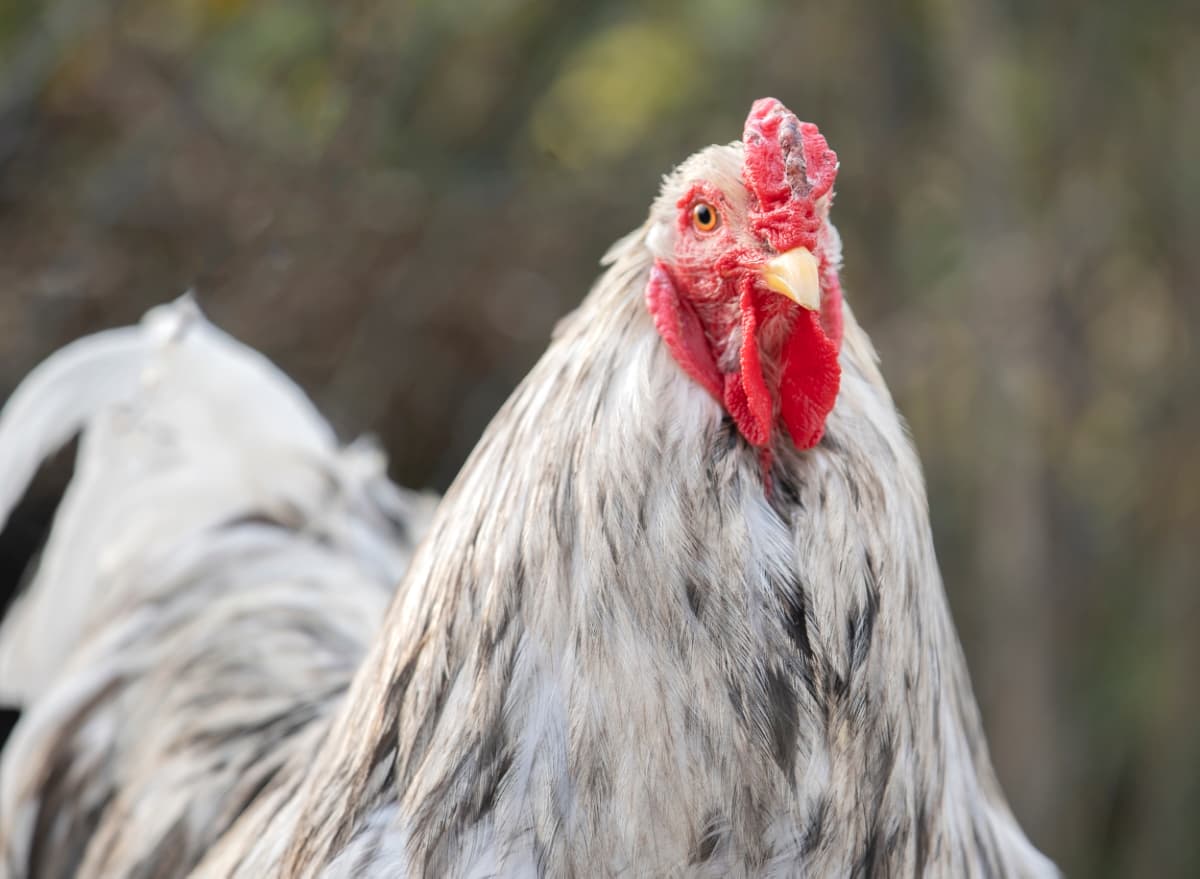
Feeding Brahmas
Brahma chickens are not picky eaters, but they do have some specific nutritional needs and diet preferences that you need to consider. Brahmas are dual-purpose birds that need a balanced diet of proteins, carbohydrates, fats, vitamins, minerals, and water to support their growth, health, egg production, and feather quality.
Nutritional Needs and Diet
- Chicks (0-8 weeks): Feed 18% protein starter, medicated or non-medicated. Provide grit for digestion.
- Growers (8-20 weeks): Feed 16% protein grower, unmedicated. Continue offering grit.
- Layers (20 weeks onwards): Feed 16% protein, 3-4% calcium layer feed for egg production. Supplement with oyster shells or crushed eggshells.
- Roosters (any age): Provide a lower-calcium diet to prevent kidney issues.
Tips for Feeding Young Chicks vs. Adult Birds
- Provide high-quality starter feed with at least 20% protein for rapid growth.
- Gradually transition to grower feed based on age and activity level.
- Adult Brahmas need layer feed for egg production.
- Supplement diet with treats like mealworms or kitchen scraps, maintaining a balanced diet.
Watering Your Chickens
Brahma chickens require clean, accessible water for their health and well-being. Regularly clean water containers and keep them free from contaminants to prevent harmful bacteria growth.
Importance of Clean Water
Dehydration can affect egg production and vitality. Monitor their water consumption, especially during hot weather, and provide additional sources if needed. Fresh, clean water is crucial for maintaining healthy Brahma chickens.
Best Practices for Watering Systems
Efficient watering systems are crucial for maintaining a clean water supply for Brahmas. Automatic waterers or nipple drinkers can minimize contamination risk. Regularly cleaning and checking water containers helps prevent algae and bacteria buildup. During colder months, monitor containers to prevent freezing, as Brahmas require unfrozen water for optimal health.
In case you missed it: 45 Days Chicken Business Plan: Revenue, Costs, and Profitability Analysis
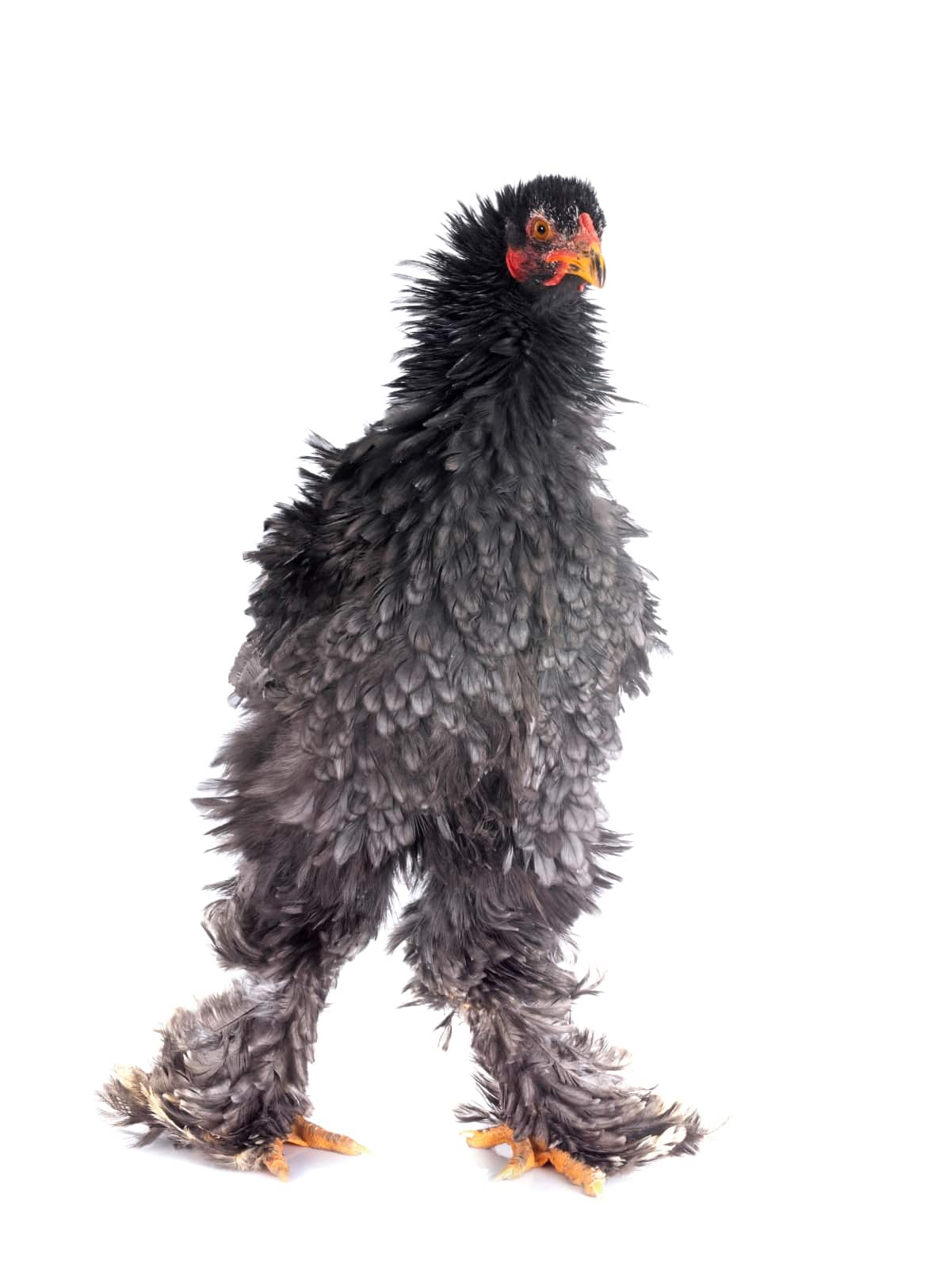
Health and Wellness
Brahma chickens are generally healthy and robust birds that can live up to 8 years if well cared for. However, they can still suffer from some common health issues that affect most chickens. Here are some of the health problems to watch out for and how to prevent or treat them:
Common Health Issues in Brahmas
- Respiratory infections: Brahma chickens are susceptible to respiratory infections such as colds, bronchitis, or pneumonia. These infections can lead to signs such as sneezing, coughing, wheezing, nasal discharge, or eye swelling.
- Parasites: Brahma chickens can get infested by external or internal parasites such as mites, lice, fleas, worms, or coccidia. These parasites can cause symptoms such as itching, feather loss, weight loss, diarrhea, or anemia.
- Bumblefoot: Chickens who have bumblefoot have a bacterial infection on their feet. It is brought on by an injury or wound that becomes infected with germs like staphylococcus. It may result in symptoms including discomfort, redness, swelling, or pus in the foot.
Preventive Healthcare and Regular Check-ups
Prevent respiratory infections in birds by maintaining a well-ventilated, clean, and dry coop while boosting immunity with vitamins and probiotics. Isolate birds showing respiratory signs and seek vet consultation. Ward off parasites by keeping the coop debris-free and using recommended treatments. Avoid bumblefoot by ensuring a hazard-free environment, regular foot checks, and prompt treatment with antiseptic and antibiotics if needed. Consult a vet for proper care.
Handling and Socialization
Brahma chickens are gentle and friendly birds that enjoy human interaction and attention. They are easy to handle and socialize if you start from a young age and use positive reinforcement.
How to Handle Brahmas Safely
Handle Brahma chickens with care by approaching them calmly and avoiding sudden movements or noises. When picking them up, support their breast with one hand and their back with the other, lifting gently and holding them close to your body. Avoid grabbing wings, legs, or necks to prevent injury or panic. Support their feet to prevent scratching.
Socializing Your Chickens with Other Flock Birds
Introducing Brahmas to a flock requires a gradual approach. Keep new birds in quarantine for a few days, allowing visual contact. Later, let them mingle in a neutral space with room to escape. Monitor for signs of aggression and intervene if needed to ensure a peaceful integration with existing flock members.
Egg Laying and Care
Brahma chickens are good layers that produce large brown eggs that weigh about 60 grams each. They can lay about three to four eggs for seven days or 150 to 200 eggs for 365 days. They usually start laying eggs at about six months of age and continue until they are 4 to 5 years old.
Understanding Egg Production in Brahmas
Brahma chickens exhibit seasonal egg-laying patterns, with higher production during spring and summer. To boost their egg output, provide artificial lighting for 14-16 hours daily, ensure warmth in cold weather, offer a high-protein diet with calcium and omega-3 supplements, create a stress-free environment through a safe habitat, and maintain their health by preventing diseases and parasites.
Nesting Boxes and Egg Collection
Brahma chickens require one nesting box for every 4-5 hens, filled with soft bedding like straw or wood shavings. Maintain clean, dry boxes to prevent dirty or infected eggs. Collect eggs daily to prevent breakage or predation, storing them in a cool, dry place until use.
In case you missed it: Pasture-Based Free-Range Chicken Farming: How to Implement for Improving Welfare and Quality
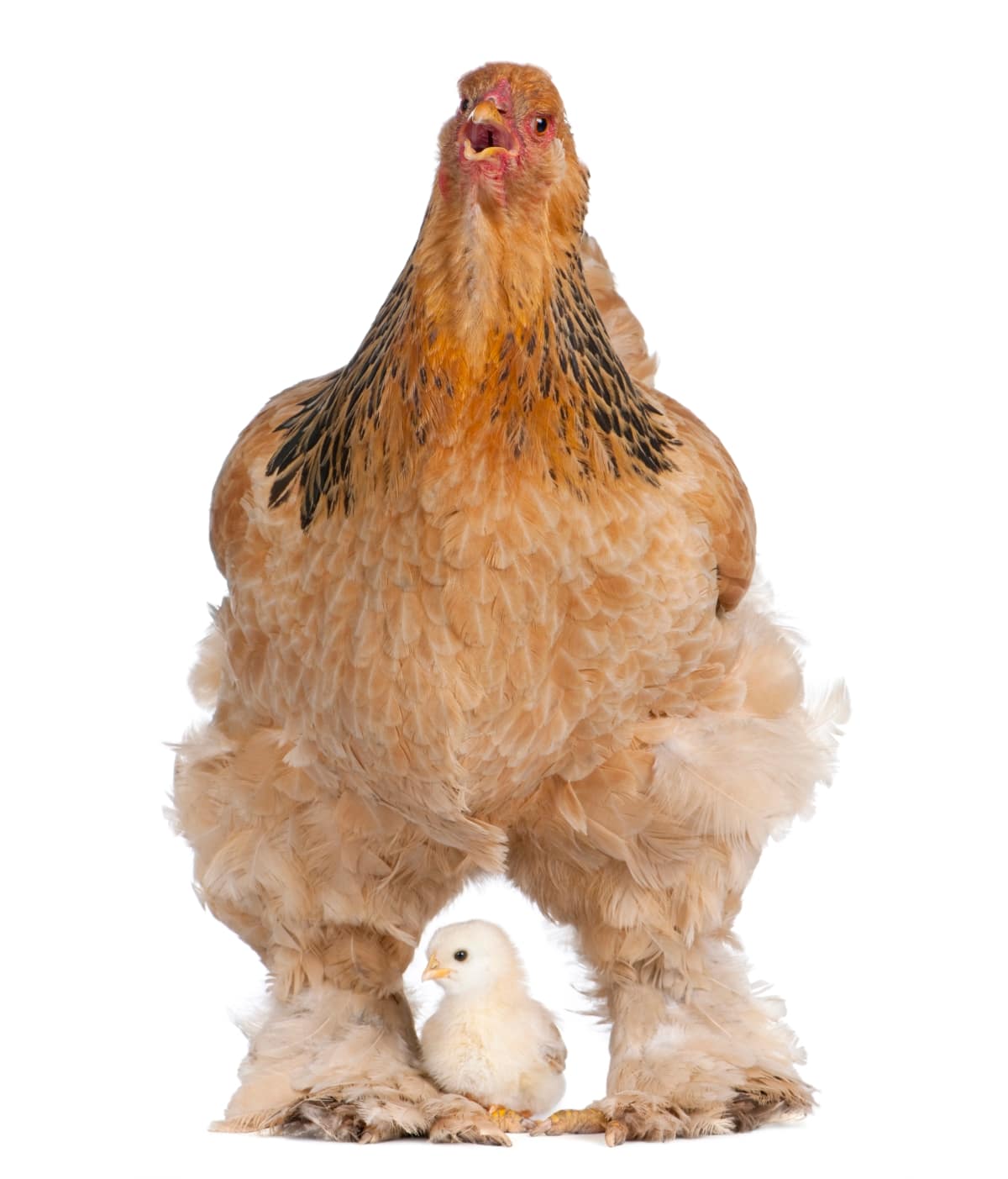
Brooding Brahma Chicks
Brahma chicks are adorable balls of fluff that require special attention and care. They need a warm and secure environment to grow and thrive.
Setting Up a Brooder
A brooder is crucial for raising Brahma chicks, which can be a cardboard box, plastic tub, or metal cage. A reliable heat source is essential, maintaining a temperature of 95°F initially and reducing by 5°F weekly. Clean bedding is essential, and fresh water and high-protein feed (18% minimum) are provided, with occasional treats. Regular cleaning and monitoring of chick behavior ensure comfort.
Monitoring Growth and Development
Weekly weighing is crucial for monitoring Brahma chicks for signs of illness or injury. Vigilant monitoring is essential for adjusting feed and avoiding obesity. Feather development is also monitored, necessitating grooming. Brahma chickens are known for their calm demeanor, but potential aggression or bullying should be addressed promptly. Consulting a veterinarian is advised for any health concerns.
Integrating New Chickens into the Flock
If you want to add new chickens to your existing flock of Brahmas, you need to do it gradually and carefully to avoid stress and conflict. Chickens have a pecking order that determines their social status and access to resources.
Quarantine Procedures
Before introducing new chickens to your flock, quarantine them for at least two weeks in a separate coop. This prevents disease or parasite transmission to existing birds. Provide separate food and water, monitor daily for signs of illness or injury, and treat as needed to ensure a healthy integration process.
Introduction Techniques to Minimize Stress
- See-but-don’t-touch method: Keep new chickens in a separate cage, allowing visual contact but preventing physical interaction for a few days.
- Free-range method: Allow new chickens to mingle with the flock during the day in a supervised open space, returning them to their enclosure at night.
- Sneak-in method: Introduce new chickens to the coop at night after initially using one of the previous methods, ensuring a smoother integration if the flock is accepting. Monitor for any signs of aggression or injuries during interactions.
Protection from Predators
Brahma chickens are large and heavy birds that are not very good at flying or escaping from predators. They need adequate protection from potential threats, such as dogs, cats, foxes, raccoons, hawks, owls, or snakes.
Identifying Potential Threats
The first step to protecting your flock is to identify the potential predators in your area and their habits. Different predators may attack at different times of the day or night and use different methods to access your coop. For example, dogs and foxes may dig under your fence, raccoons may open latches or climb over your fence, hawks and owls may swoop down from above, and snakes may slither through small gaps or holes.
Secure Housing and Protective Measures
Secure housing is crucial for protecting your flock from predators. A sturdy coop with no gaps and a high fence with wires is recommended. Hardware cloth or chicken wire is a stronger option. Additional protective measures like locks, latches, hinges, springs, electric wires, motion sensors, lights, alarms, or traps can further deter predators.
Seasonal Care Adjustments
Brahma chickens are hardy birds that can adapt to different climates and seasons. However, they still need some adjustments in their care depending on the weather and temperature.
Preparing for Winter
Brahma chickens require a dry, well-ventilated coop to stay warm in winter. It should have ample space, roosts, nest boxes, bedding, and insulation. Clean water, apple cider vinegar, or garlic can boost their immune system. Extra treats like corn, sunflower seeds, or mealworms can increase their calorie intake and keep them happy.
Managing Heat Stress in Summer
Brahma chickens can handle heat better than other breeds but need shade and cool water to avoid heat stress. Provide a shaded area, install a fan or mister, and provide fresh water. Add ice cubes or frozen bottles for coolness. Offer watermelon, cucumber, or lettuce for hydration.
In case you missed it: Strategies for Maximizing Egg Production in Your Chicken Farm: Tried and Tested Strategies
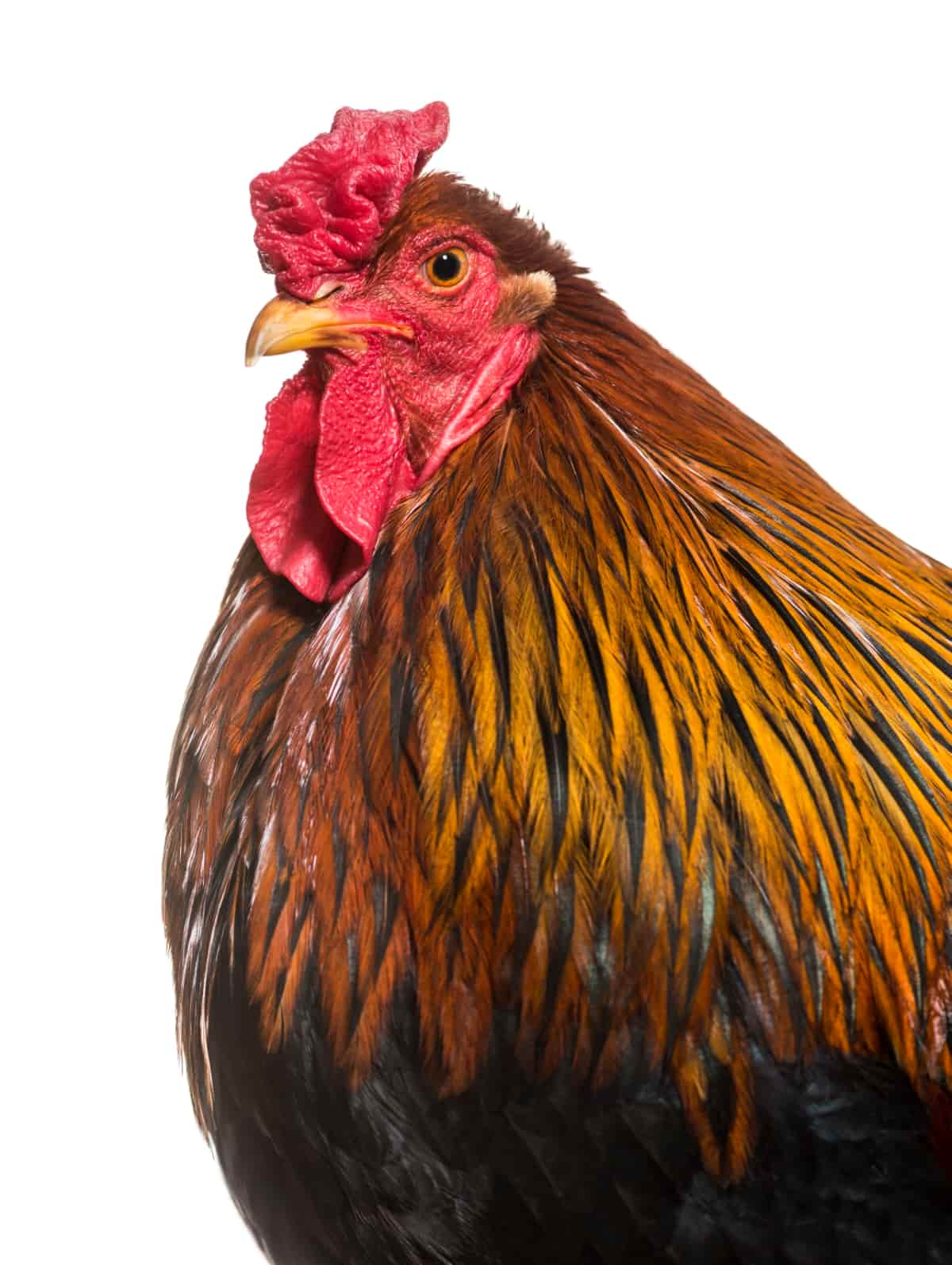
Grooming and Maintenance
Brahma chickens do not require much grooming, but they do need some regular maintenance to keep them healthy and clean.
Feather Care and Molt Management
Brahma chickens have delicate feathers that require care to prevent damage. They should be brushed, trimmed, and checked for mites or lice. They molt annually in late summer or early fall and may appear raggedy. To help them, they should receive extra protein, vitamins, and minerals and reduce stress by avoiding predators and disturbance sources.
Claw and Beak Trimming
Brahma chickens require regular trimming of their long claws and strong beaks to prevent overgrowth and curling. Carefully cut the tips and file them with nail clippers or scissors. Provide hard surfaces for pecking and trim the beaks if they are too long or sharp.
Breeding Brahma Chickens
Brahma chickens are excellent breeders that can produce many offspring with good qualities. They are also friendly and gentle with their mates and chicks, making them ideal for backyard breeding.
Selecting Breeding Stock
To breed Brahma chickens, select healthy birds that conform to breed standards and have good temperament, fertility, egg production, and meat quality. Avoid breeding birds with defects or diseases that could affect the offspring’s health or appearance. Avoid inbreeding to prevent genetic problems and reduce vigor. Use a pedigree chart or software program to track ancestry and avoid mating-related birds.
Incubation and Hatching Techniques
Egg hatching is a crucial step in breeding Brahma chickens. The natural method involves a broody hen caring for the eggs, while the artificial method uses an incubator and brooder. The natural method is easier but requires more equipment and attention. The artificial method is more reliable but requires regular monitoring and care for the chicks.
Legal and Ethical Considerations
Ethical considerations are crucial in breeding Brahma chickens, as they impact the welfare of the birds. Compliance with local laws, such as licensing and vaccination, is essential. Respecting the rights of birds and their offspring is crucial, as is providing them with adequate housing, food, water, healthcare, and protection. Avoiding harmful practices like overcrowding and culling is also essential.
Understanding Local Regulations
Breeding Brahma chickens requires understanding local regulations regarding poultry keeping and breeding. Different states, counties, cities, and neighborhoods may have different rules regarding the number, type, size, and location of poultry. Obtaining a permit or license may be necessary for legal breeding. Researching laws and regulations, contacting local authorities, and joining a local poultry club or association can provide advice and support.
Ethical Breeding and Raising Practices
- Ensure spacious, clean, well-ventilated, and predator-proof housing.
- Provide nutritious food and constant access to clean water.
- Prioritize preventive health care and treat any diseases or injuries promptly.
- Protect birds from extreme weather, predators, pests, and parasites.
- Enrich their environment to stimulate natural behaviors.
- Avoid harmful practices like overcrowding or debeaking.
- Respect individual preferences, social needs, and reproductive rights of the birds.
Conclusion
Raising Brahma chickens is an enriching journey filled with care and joy. By embracing the ultimate guide’s insights on diet, temperament, egg production, and breeding tips, you’ll foster healthy, giant Brahmas. Be it their feather care, egg colors, or winterizing coops; this guide ensures a thriving flock, blending your love with these majestic creatures seamlessly.
- Types of Pesticides Used in Agriculture: A Beginner’s Guide
- Economical Aquaculture: A Guide to Low-Budget Fish Farming
- 15 Common Planting Errors That Can Doom Your Fruit Trees
- How to Make Houseplants Bushy: Effective Tips and Ideas
- Innovative Strategies for Boosting Coconut Pollination and Yield
- Pollination Strategies for Maximum Pumpkin Yield
- The Complete Guide to Chicken Fattening: Strategies for Maximum Growth
- Natural Solutions for Tulip Problems: 100% Effective Remedies for Leaf and Bulb-Related Issues
- Revolutionizing Citrus Preservation: Towards a Healthier, Greener Future
- Natural Solutions for Peony Leaf and Flower Problems: 100% Effective Remedies
- Maximizing Profits with Avocado Contract Farming in India: A Comprehensive Guide
- Natural Solutions for Hydrangea Problems: 100% Effective Remedies for Leaf and Flowers
- The Ultimate Guide to Choosing the Perfect Foliage Friend: Bringing Life Indoors
- From Sunlight to Sustainability: 15 Ways to Use Solar Technology in Agriculture
- The Ultimate Guide to Dong Tao Chicken: Exploring from History to Raising
- The Eco-Friendly Makeover: How to Convert Your Unused Swimming Pool into a Fish Pond
- Mastering the Art of Delaware Chicken Farming: Essentials for Healthy Backyard Flocks
- 20 Best Homemade Fertilizers for Money Plant: DIY Recipes and Application Methods
- How to Craft a Comprehensive Free-Range Chicken Farming Business Plan
- Brighten Your Flock: Raising Easter Egger Chickens for Beauty and Bounty
- How to Optimize Your Poultry Egg Farm Business Plan with These Strategies
- Subsidy for Spirulina Cultivation: How Indian Government Schemes Encouraging Spirulina Farmers
- Ultimate Guide to Raising Dominique Chickens: Breeding, Feeding, Egg-Production, and Care
- Mastering the Art of Raising Jersey Giant Chickens: Care, Feeding, and More
- Ultimate Guide to Raising Legbar Chickens: Breeding, Farming Practices, Diet, Egg-Production
- How to Raise Welsummer Chickens: A Comprehensive Guide for Beginners
- How to Protect Indoor Plants in Winter: A Comprehensive Guide
- Ultimate Guide to Grow Bag Gardening: Tips, Tricks, and Planting Ideas for Urban Gardeners
- Guide to Lotus Cultivation: How to Propagate, Plant, Grow, Care, Cost, and Profit
- Agriculture Drone Subsidy Scheme: Government Kisan Subsidy, License, and How to Apply Online
- Ultimate Guide to Raising Araucana Chickens: Breed Profile, Farming Economics, Diet, and Care
- Bringing Hydroponics to Classroom: Importance, Benefits of Learning for School Students
- Ultimate Guide to Raising Polish Chickens: Breed Profile, Farming Economics, Diet, and Care
- Ultimate Guide to Raising Australorp Chickens: Profile, Farming Economics, Egg Production, Diet, and Care
- Silkie Chicken Farming: Raising Practices, Varieties, Egg Production, Diet, and Care
- Sussex Chicken Farming: Raising Practices, Varieties, Egg Production, Diet and Care